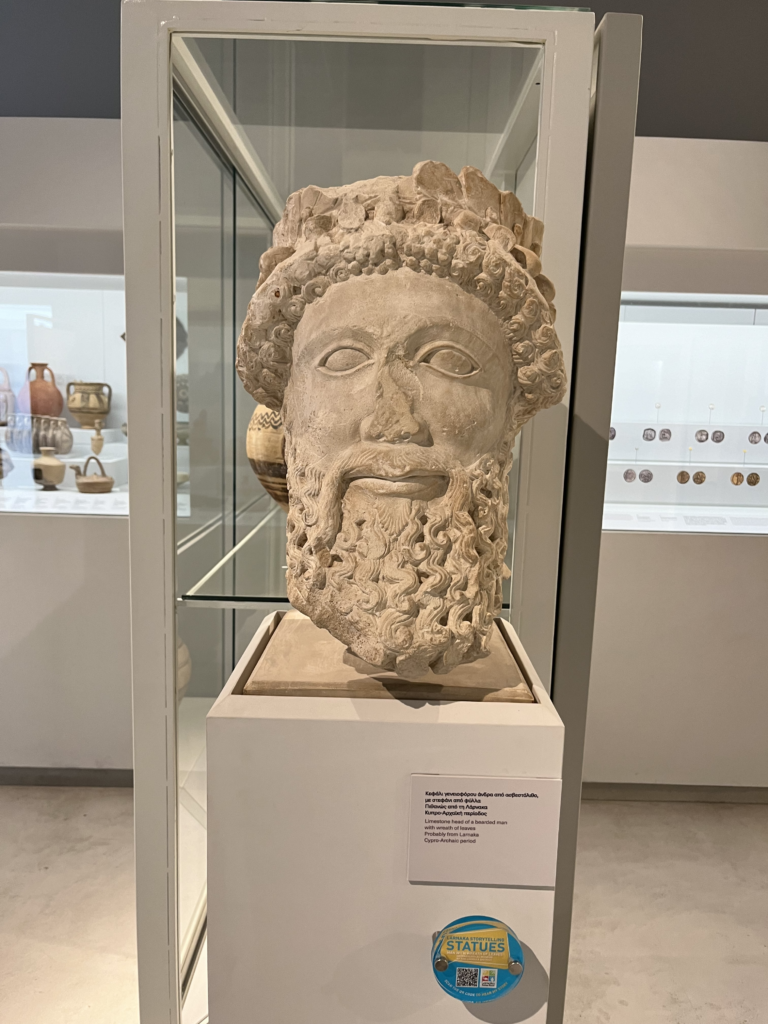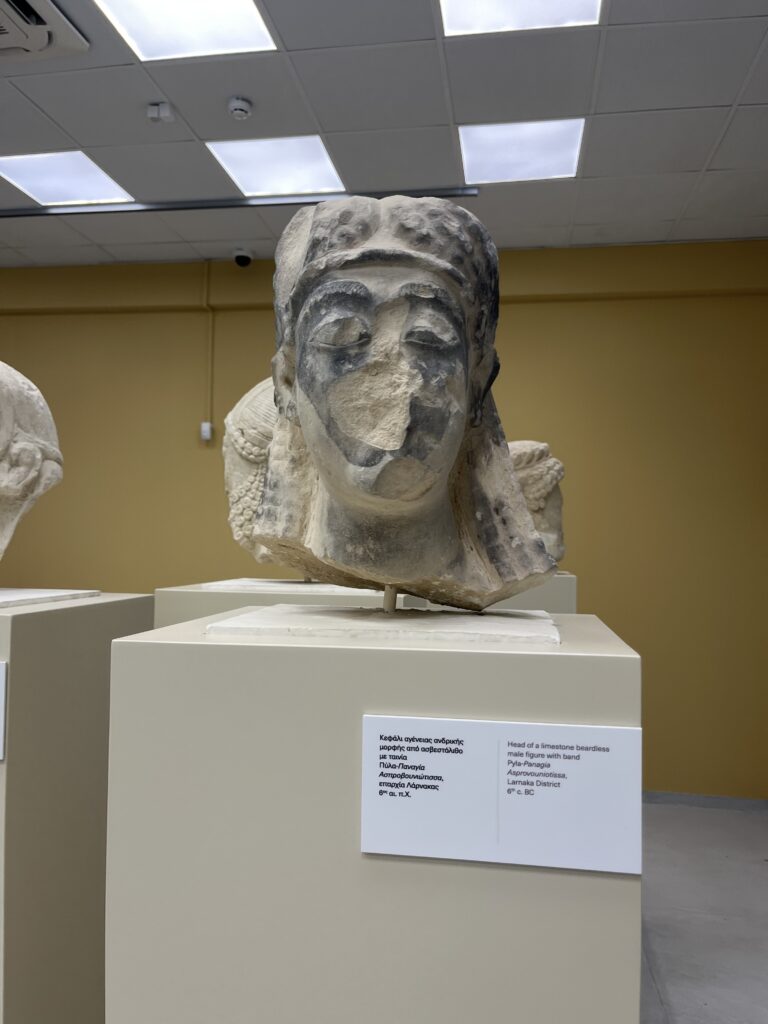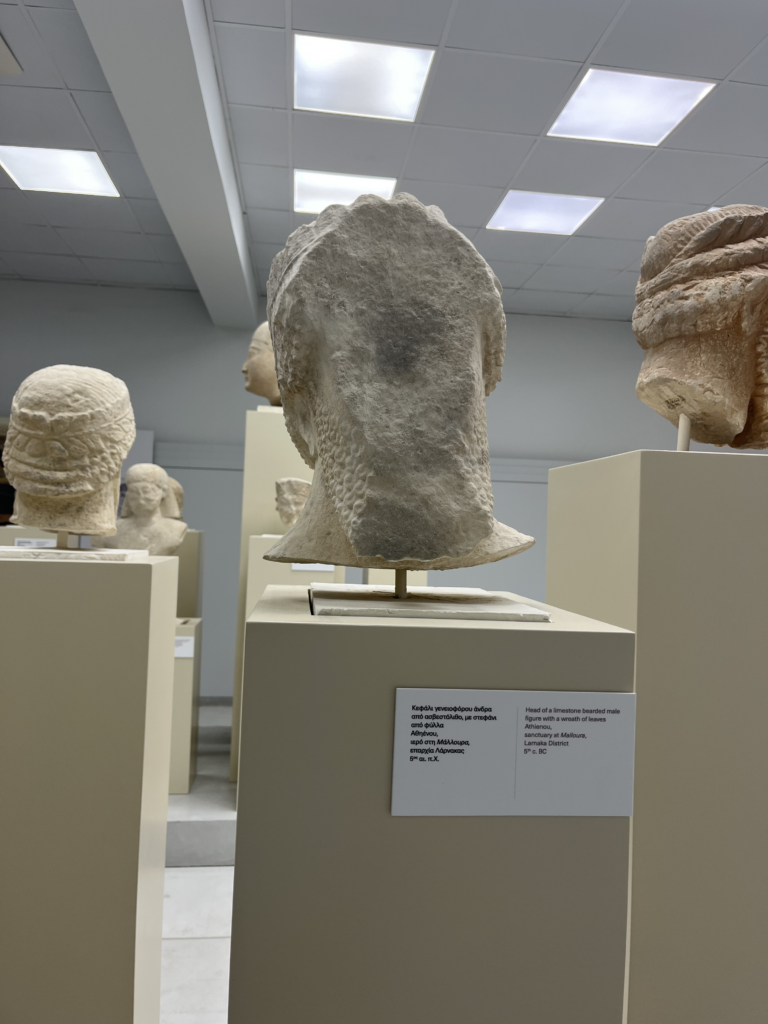Kayra Lyons
Throughout all of our archaeological museum visits, there have been many common themes. We have explored the archaeological museums in Limassol, Paphos, Nicosia, as well as Larnaca, giving a good idea of what Cypriot archaeology has to offer. One kind of artifact that I was surprised to find so many of were the carved limestone heads that appeared in most of the museums we visited. What I heard Tom describing that I took note of as interesting with the heads, as well as with many of the other artifacts present in the archaeological museums, was the mixing of many sculptural styles.
From Egyptian, to Greek, to Assyrian, Cypriot limestone heads can be represented as a mix of all and more. It is representative of the many powers that have had influence over Cyprus throughout history. As someone who is half Cypriot, learning and understanding more about ancient Cypriot history was something that was important to me on this trip, and I think these limestone heads were a good representation of what I found interesting.These heads are a
representation of the influences on Cypriot sculpture that came from abroad.



I chose a few limestone heads that I photographed, ones that occupy different periods in history, to demonstrate what a unique case Cyprus is, and in what cases I saw resemblance to statues from elsewhere. One head is from the 5th century BCE, the other from the 6th BCE and the last from the Cypro-Archaic period. In the head from the 5th century, you can see a head with a beard that resembles the sculptural beards of Assyrian statues. In the head from the 6th
century, the facial construction, specifically around the eyes and the eyebrows, seem to resemble some Egyptian facial features in statues of this time period. Finally, the head from the Cypro-Archaic period can be seen wearing a wreath of leaves, something that I felt resembled Greek sculptures I had seen.
